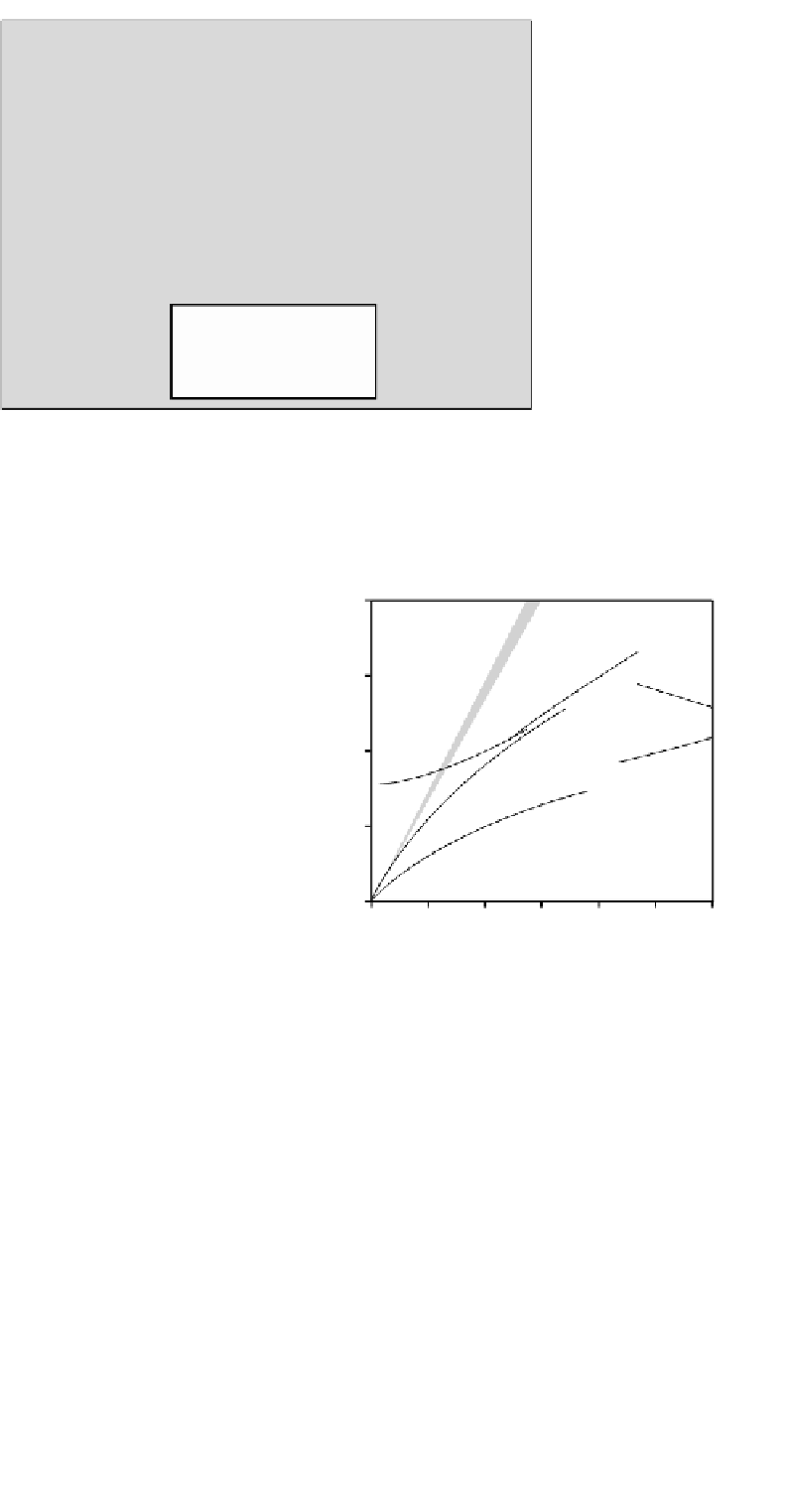Geoscience Reference
In-Depth Information
Box 4.2
Variation of density, elastic modullii, and body wave speeds with
depth
depth
ρ
p
K
G
u
P-wave
S-wave
kg m
-3
km s
-1
km s
-1
km
kbar
kbar
kbar
20
2900
6
1315
441
8.11
4.49
80
3370
25
1303
674
8.08
4.67
150
3370
48
1287
665
8.03
4.44
500
3850
171
2181
1051
9.65
5.22
1000
4580
386
3519
1874
11.46
6.40
2000
5120
869
5132
2462
12.82
6.93
3000
10007
1472
6581
0
8.25
0
4200
11510
2631
10814
0
9.69
0
5000
12090
3204
12740
0
10.27
0
6200
13080
3631
14236
1756
11.26
3.66
u
P-wave
= (
K
+ 1.33
G
/
r
)
0.5
)
0.5
u
S-wave
= (
G
/
r
increase of wave speed with depth required by seismologi-
cal observations. It is simpler in a way to plot seismic wave
velocity as a function of density alone; the relationship is
linear, of the form
u
b
, for both experimental
S
-
and
P
-waves passing through crustal rocks of density
a
40
3,500 kg m
3
: it is sometimes known as
Birch's law
.
The wholly unique nature of seismic waves lies in the
products of their interactions with internal discontinuities.
An obliquely incident ray, like the
P
-wave illustrated in
Fig. 4.135, produces not only reflected and refracted
P
-waves but also a reflected and refracted
S
-wave. The lat-
ter somewhat surprising metamorphosis is not so startling
when one realizes that because the obliquely incident
P
-ray is traveling into a rock discontinuity, differential
shear takes place along the plane and a shear wave is thus
generated. For a normally incident
P
-wave of course, no
such shear can take place and a simple
P
-wave reflection
takes place. When the obliquely incident ray is a vertically
polarized
S
-wave (
SV
-wave) then both reflected and
refracted
P
- and
SV
-waves result. However, if the incident
ray is horizontally polarized (
SH
-wave) then no compres-
sions or differential shear can be generated across the
parallel discontinuity and only reflected and refracted
SH
-waves are generated.
Clearly, given the complexity of wave types and the
various possible transit paths through the Earth layers it
would be sensible to have a common notation to describe
wave attributes. The chosen code (Fig. 4.138) is based
around the
P
- and
S
-wave classification. Simplest of all are
P
- and
S
-waves that leave the earthquake focus and travel
entirely within the mantle to any remote recording station.
PS
PKKP
30
PP
PKP
PKiKP
20
ScS
S
P
10
0
0
30
60
90
120
150
180
Distance (
°
)
ScS
P
S
PKiKP
PP
ic
PKIKP
PS
oc
PKP
ma
Fig. 4.138
The nomenclature of certain seismic waves and their travel
times for distance from an earthquake focus (ma: mantle, oc: outer
core, ic: inner core).











Search WWH ::

Custom Search